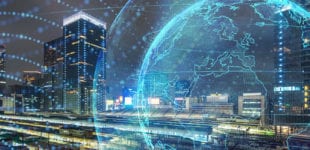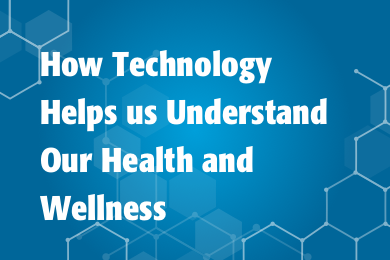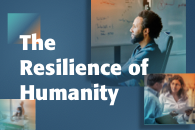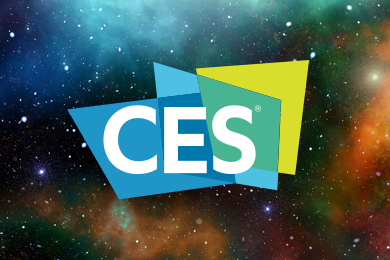June 6, 2018
The number of wireless sensors connected to the IoT is large, and growing exponentially. These devices will help monitor a broad range of conditions, from soil moisture to people’s health. Of course, the presence of these sensors is only half the story – the data they generate will grow exponentially too, and will be a key component of deep learning, allowing machines to tackle challenges beyond anything we’ve seen thus far.
Analyzing New Content Types
In years past, when it came to machine learning, text was king. Processing text files helped form the basis for algorithms. While that will continue, the scope of learning is about to get a lot broader. Karen Panetta, IEEE Fellow and Dean of Graduate Engineering Education for the School of Engineering at Tufts University, predicts “Deep learning will help us analyze and better utilize the massive amounts of data being shared. We are not just analyzing text anymore. Image content and audio analysis will become instrumental to making the IoT impactful.”
Analyzing audio and video opens up learning opportunities that can better approximate the human experience. For Shawn Chandler, IEEE Senior member and director at Navigant, potential applications include “various types of artificial neural networks (ANN), particle swarm optimization (PSO), genetic and evolutionary computing, agent based simulation, dynamic programming and many others.”
As these new approaches are vetted and verified with real data, they’ll improve the function of a number of industries, and subsequently our quality of life.
Far from Simple
The idea that massive amounts of data coming from the IoT will translate into gains in deep learning is not a guarantee. In fact, as the scale of data from connected devices rapidly multiplies, finding ideal data sets to teach machines could become a serious challenge. To Sukanya Mandal, IEEE member and Data Science Professional in India, some advanced planning is necessary: “We should be concerned about making the maximum utilization of IoT data for generating smart insights. Solutions needs to be built so that the most data can be fed into the analytics pipeline, while less of it is lost due to redundancy.”
Changing Other Aspects of Life
Deep learning stands to complement our behaviors and inform our decision making, especially on complex problems. Panetta sees our electricity use as an obvious starting point: “Monitoring our power consumption will be the next big feature, helping to create profiles of our needs and where we spend our time. Not just how much we use (as shown on our electric bill), but where and what devices we spent most of our time using.”
IEEE recently convened 19 experts on artificial intelligence, machine learning and cybersecurity, and they collectively authored a paper on the challenges society is facing. You can read more about it here; Transmitter will have a series of articles on it in the near future.





 Liquid Infrastructure: Our Planet's Most Precious Resource
Liquid Infrastructure: Our Planet's Most Precious Resource The Impact of Technology in 2025
The Impact of Technology in 2025 Quantum and AI: Safeguards or Threats to Cybersecurity?
Quantum and AI: Safeguards or Threats to Cybersecurity? Why AI Can't Live Without Us
Why AI Can't Live Without Us Bits, Bytes, Buildings and Bridges: Digital-Driven Infrastructure
Bits, Bytes, Buildings and Bridges: Digital-Driven Infrastructure Impact of Technology in 2024
Impact of Technology in 2024 Emerging AI Cybersecurity Challenges and Solutions
Emerging AI Cybersecurity Challenges and Solutions The Skies are Unlimited
The Skies are Unlimited Smart Cities 2030: How Tech is Reshaping Urbanscapes
Smart Cities 2030: How Tech is Reshaping Urbanscapes Impact of Technology 2023
Impact of Technology 2023 Cybersecurity for Life-Changing Innovations
Cybersecurity for Life-Changing Innovations Smarter Wearables Healthier Life
Smarter Wearables Healthier Life Infrastructure In Motion
Infrastructure In Motion The Impact of Tech in 2022 and Beyond
The Impact of Tech in 2022 and Beyond Cybersecurity, Technology and Protecting Our World
Cybersecurity, Technology and Protecting Our World How Technology Helps us Understand Our Health and Wellness
How Technology Helps us Understand Our Health and Wellness The Resilience of Humanity
The Resilience of Humanity Harnessing and Sustaining our Natural Resources
Harnessing and Sustaining our Natural Resources Creating Healthy Spaces Through Technology
Creating Healthy Spaces Through Technology Exceptional Infrastructure Challenges, Technology and Humanity
Exceptional Infrastructure Challenges, Technology and Humanity The Global Impact of IEEE's 802 Standards
The Global Impact of IEEE's 802 Standards Scenes of our Cyber Lives: The Security Threats and Technology Solutions Protecting Us
Scenes of our Cyber Lives: The Security Threats and Technology Solutions Protecting Us How Millennial Parents are Embracing Health and Wellness Technologies for Their Generation Alpha Kids
How Millennial Parents are Embracing Health and Wellness Technologies for Their Generation Alpha Kids Space Exploration, Technology and Our Lives
Space Exploration, Technology and Our Lives Global Innovation and the Environment
Global Innovation and the Environment How Technology, Privacy and Security are Changing Each Other (And Us)
How Technology, Privacy and Security are Changing Each Other (And Us) Find us in booth 31506, LVCC South Hall 3 and experience the Technology Moon Walk
Find us in booth 31506, LVCC South Hall 3 and experience the Technology Moon Walk Virtual and Mixed Reality
Virtual and Mixed Reality How Robots are Improving our Health
How Robots are Improving our Health IEEE Experts and the Robots They are Teaching
IEEE Experts and the Robots They are Teaching See how millennial parents around the world see AI impacting the lives of their tech-infused offspring
See how millennial parents around the world see AI impacting the lives of their tech-infused offspring Take the journey from farm to table and learn how IoT will help us reach the rising demand for food production
Take the journey from farm to table and learn how IoT will help us reach the rising demand for food production Watch technical experts discuss the latest cyber threats
Watch technical experts discuss the latest cyber threats Explore how researchers, teachers, explorers, healthcare and medical professionals use immersive technologies
Explore how researchers, teachers, explorers, healthcare and medical professionals use immersive technologies Follow the timeline to see how Generation AI will be impacted by technology
Follow the timeline to see how Generation AI will be impacted by technology Learn how your IoT data can be used by experiencing a day in a connected life
Learn how your IoT data can be used by experiencing a day in a connected life Listen to technical experts discuss the biggest security threats today
Listen to technical experts discuss the biggest security threats today See how tech has influenced and evolved with the Games
See how tech has influenced and evolved with the Games Enter our virtual home to explore the IoT (Internet of Things) technologies
Enter our virtual home to explore the IoT (Internet of Things) technologies Explore an interactive map showcasing exciting innovations in robotics
Explore an interactive map showcasing exciting innovations in robotics Interactively explore A.I. in recent Hollywood movies
Interactively explore A.I. in recent Hollywood movies Get immersed in technologies that will improve patients' lives
Get immersed in technologies that will improve patients' lives